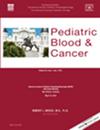Fava Bean- Versus Non-Fava Bean-Induced Acute Hemolytic Crisis in Children With Glucose-6-Phosphate Dehydrogenase Deficiency: A Prospective Comparative Study
Abstract
Background
Glucose-6-phosphate dehydrogenase (G6PD) deficiency is a red cell enzymopathy in which exposure to oxidative stressors, such as drugs or fava bean ingestion, can trigger acute hemolytic episodes (AHEs). This study aimed to compare the clinical characteristics of fava bean-induced hemolysis (FBIH) with non-fava bean-induced hemolysis (NFBIH) in children with G6PD deficiency in a high-prevalence setting.
Methods
A prospective cohort study was conducted at a region referral hospital in Oman. Hospital records of children hospitalized for AHE due to G6PD deficiency over a 3-year period were analyzed. Participants were categorized into FBIH and NFBIH groups based on the documented precipitating factor.
Results
Among the 236 recruited cases, 51.6% AHEs were attributed to FBIH. Children with FIBH were younger, more likely to present with abdominal pain, and had greater severity of hemolysis upon admission (hemoglobin: 4.8 vs. 6.7 g/dL; p < 0.001). Lab markers such as serum ferritin, blood urea, lactate dehydrogenase, and alkaline phosphatase were significantly elevated in FBIH. The least squares regression model demonstrated a strong link between various predictor variables and hemoglobin levels, explaining about 76.6% of the variance in the study cohort.
Conclusion
Children with FBIH experience more severe hemolytic episodes compared to those with NFBIH. Our statistical model identified clinical and laboratory parameters potentially useful in early risk stratification during AHEs. Culturally sensitive dietary education of patients and caregivers is necessary, particularly in regions where fava beans are a dietary staple. The potential influence of specific G6PD genotypes within the NFBIH group merits future investigation.

 求助内容:
求助内容: 应助结果提醒方式:
应助结果提醒方式:


